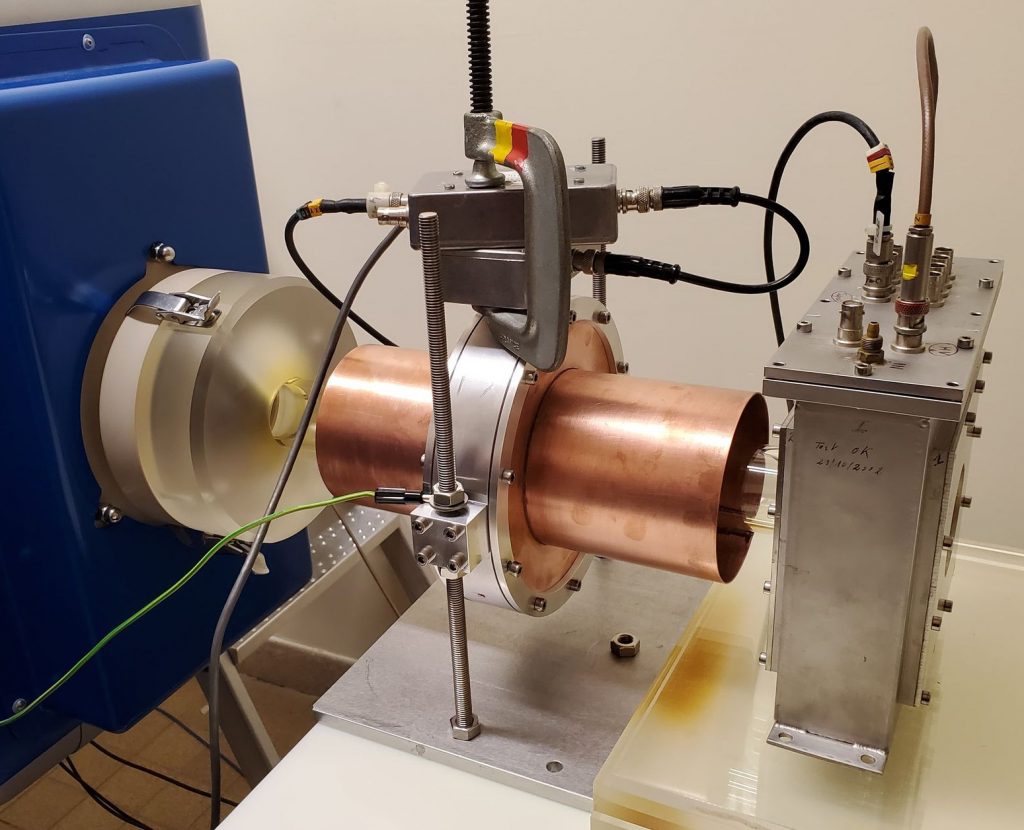THESIS DEFENSE
Chloé Lahaye
15 décembre 2022

FLASH or Ultra High Dose Rate (UHDD) radiotherapy is now considered a promising alternative to conventional radiotherapy following the discovery of the Flash effect. A biological effect observed when the treatment is delivered in a single session and over a short period of time. This biological effect considerably reduces the harmful effects of irradiation on the healthy tissue around the tumour. In this context, machines designed to deliver UHDD are being developed for preclinical studies of this effect. These machines are accompanied by problems related to beam monitoring which cannot be achieved by
ionisation chambers usually used in conventional radiotherapy. In Indeed, this type of detector has a loss of efficiency which is too important at such dose rates.
My thesis work consists in designing and developing a dose monitor, called DosiFLASH, dedicated to a machine, the ElectronFlash, which is located at the Curie Institute (Paris). This monitor couples two technologies, a beam pulse transformer used for real-time monitoring of the beam and an ionisation This monitor couples two technologies, a beam pulse transformer used for real-time monitoring of the beam and an air ionisation chamber used for dose calibration of the monitor. The beam pulse transformer has been fully designed from component sizing, to optimising the The beam pulse transformer has been completely designed from the dimensioning of the components, the optimisation of the measurement electronics to the calibration of the detector. Preliminary preliminary in situ measurements with the monitor allowed to evaluate the stability of the beam and to
validate the performance of DosiFLASH under beam conditions. In addition, a numerical model was developed to In addition, a numerical model was developed to simulate its behaviour with ElectronFlash. In particular, the model shows, that the ionisation chamber is capable of measuring a current that is proportional to the current that is proportional to the dose rate over a time at the beginning of the pulse that depends on the same parameter. By using the charge measured by the ionisation chamber over this characteristic time, it is possible to calibrate characteristic time, it is possible to calibrate in dose the pulse beam transformer used for monitoring.
Improvements to the DosiFLASH system are planned to overcome the problems of EMC problems, integrate a real time data acquisition tool and stop the machine when the dose set point is reached. when the dose set point is reached.
